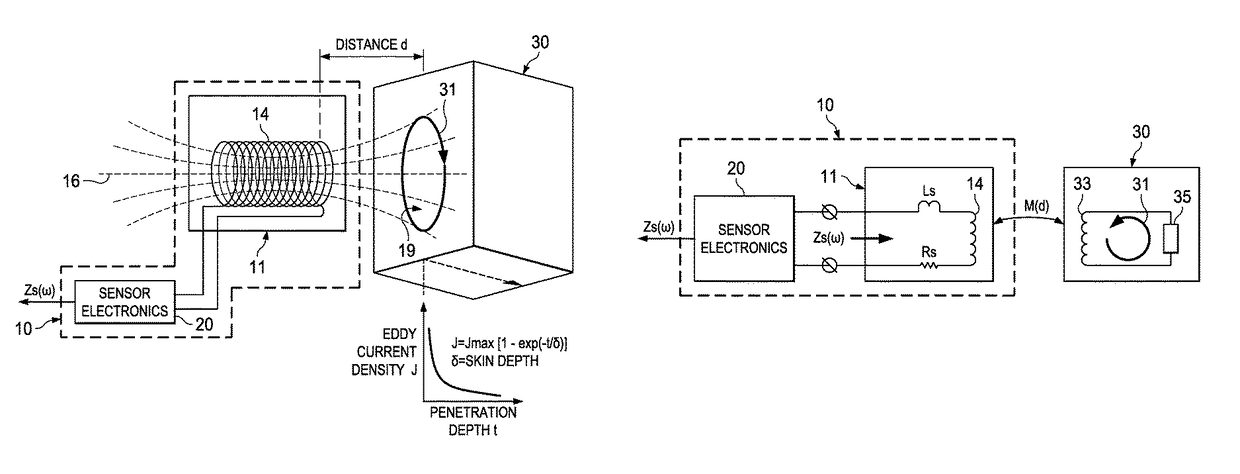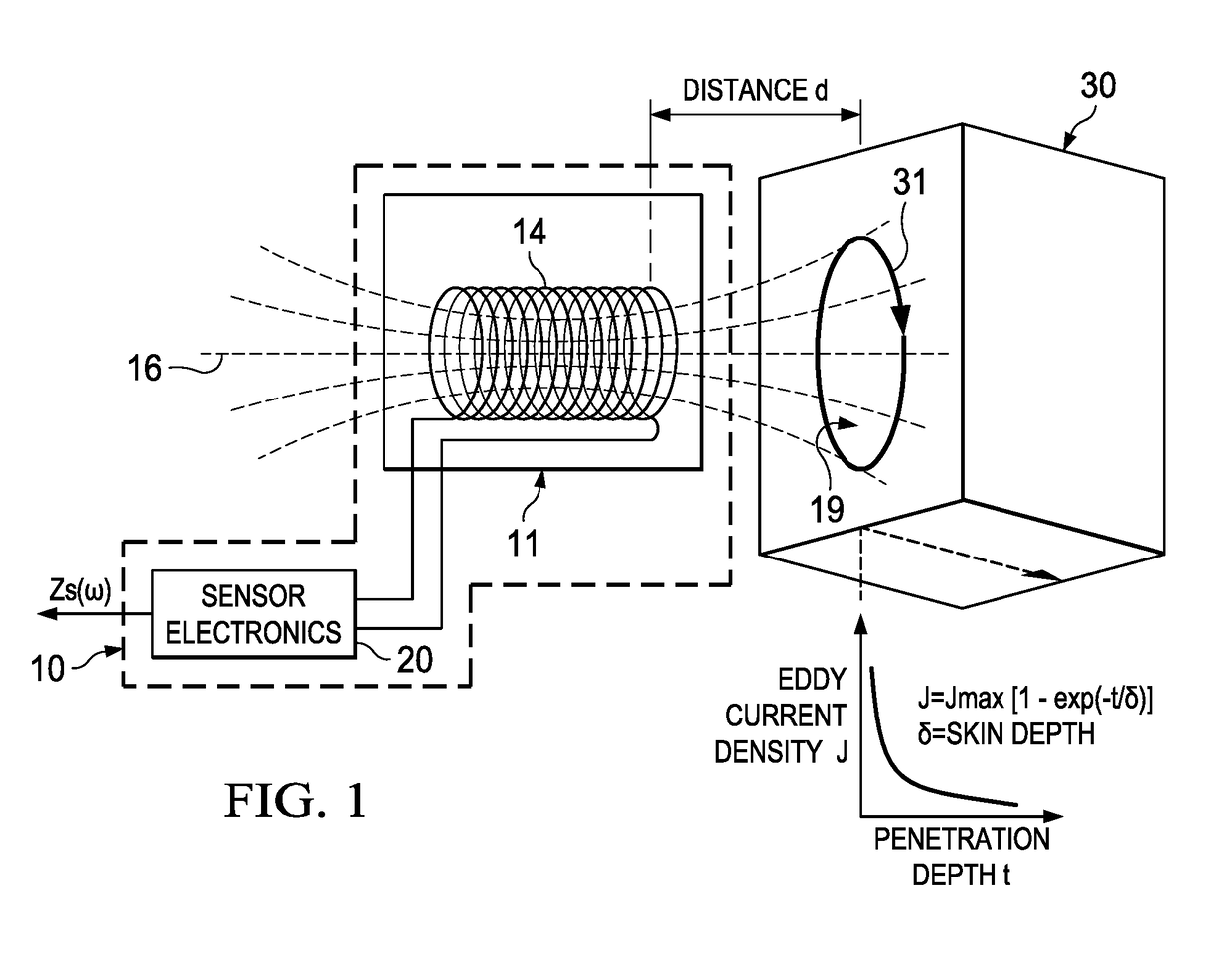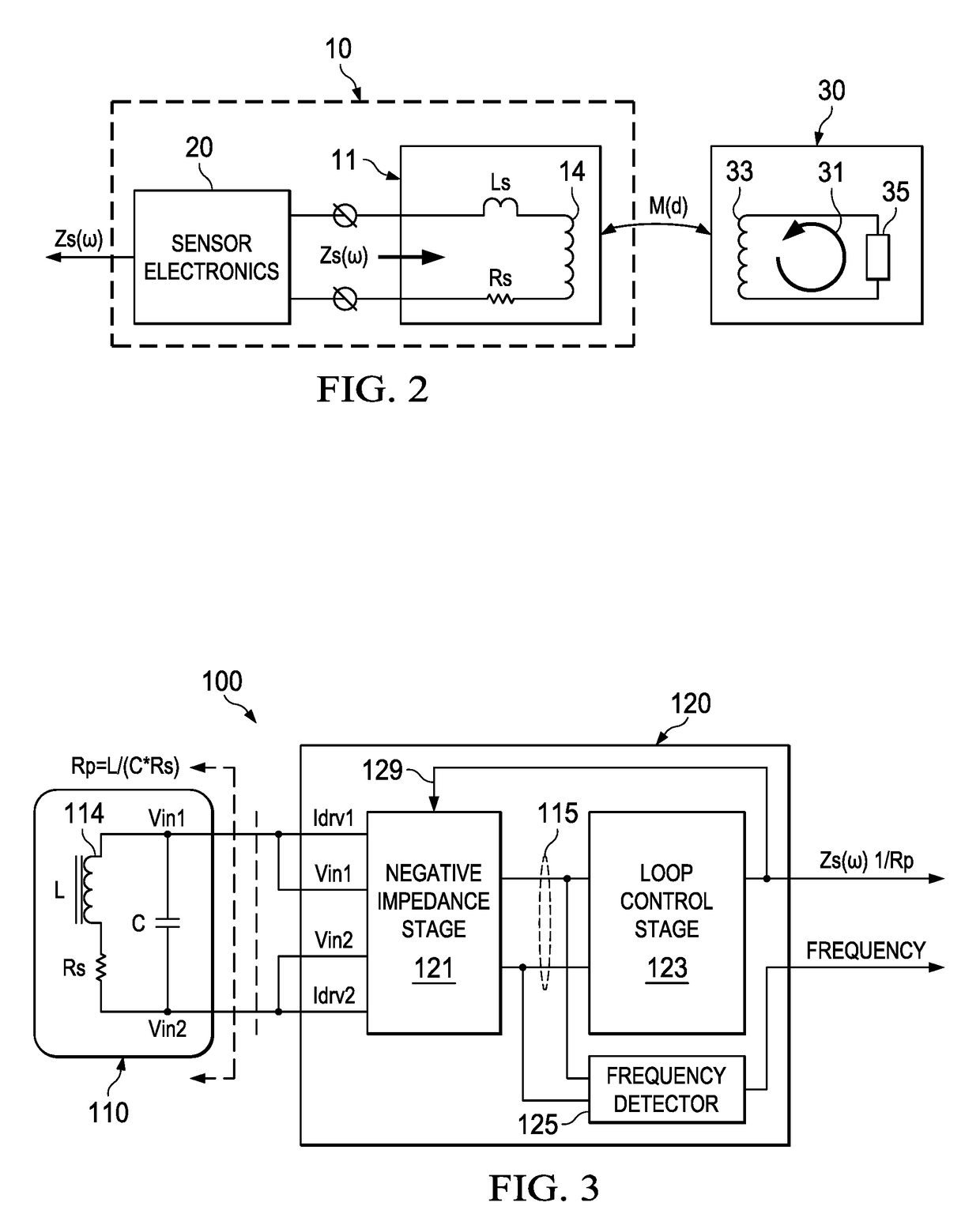Spectrographic material analysis using multi-frequency inductive sensing
a technology of inductive sensing and spectrographic material analysis, applied in the field of spectrographic material analysis, can solve problems such as complex electrical impedan
- Summary
- Abstract
- Description
- Claims
- Application Information
AI Technical Summary
Benefits of technology
Problems solved by technology
Method used
Image
Examples
Embodiment Construction
[0015]This Description and the Drawings constitute a Disclosure of example embodiments and applications that illustrate various features and advantages of spectrographic material analysis based on electrical impedance spectroscopy using multi-frequency eddy current sensing to measure electromagnetic properties of a material under test.
[0016]A problem addressed by the Disclosure is using electrodes to electrically connect to the material or tissue under test. The contact impedance of electrodes (capacitive or resistive), corrosion, chemical reaction between electrode and the material under test, and repulsion of the electrode by living tissue make the use of electrodes problematic.
[0017]In brief overview, aspects of the Disclosure include the use of inductive sensing to measure impedance at multiple frequencies (electrical impedance spectroscopy), based on induced (contactless) eddy current sensing. The multi-frequency impedance measurements are used to determine electromagnetic prop...
PUM
| Property | Measurement | Unit |
|---|---|---|
| frequency | aaaaa | aaaaa |
| frequency | aaaaa | aaaaa |
| frequency | aaaaa | aaaaa |
Abstract
Description
Claims
Application Information
 Login to View More
Login to View More - R&D
- Intellectual Property
- Life Sciences
- Materials
- Tech Scout
- Unparalleled Data Quality
- Higher Quality Content
- 60% Fewer Hallucinations
Browse by: Latest US Patents, China's latest patents, Technical Efficacy Thesaurus, Application Domain, Technology Topic, Popular Technical Reports.
© 2025 PatSnap. All rights reserved.Legal|Privacy policy|Modern Slavery Act Transparency Statement|Sitemap|About US| Contact US: help@patsnap.com



